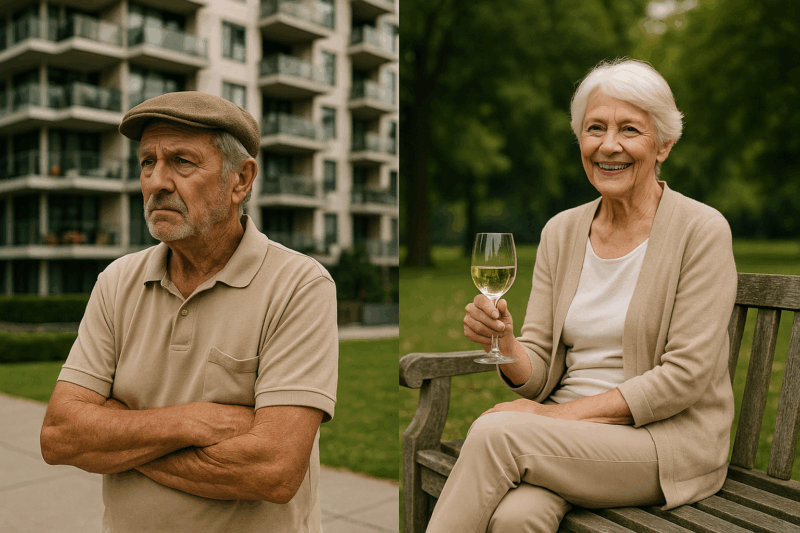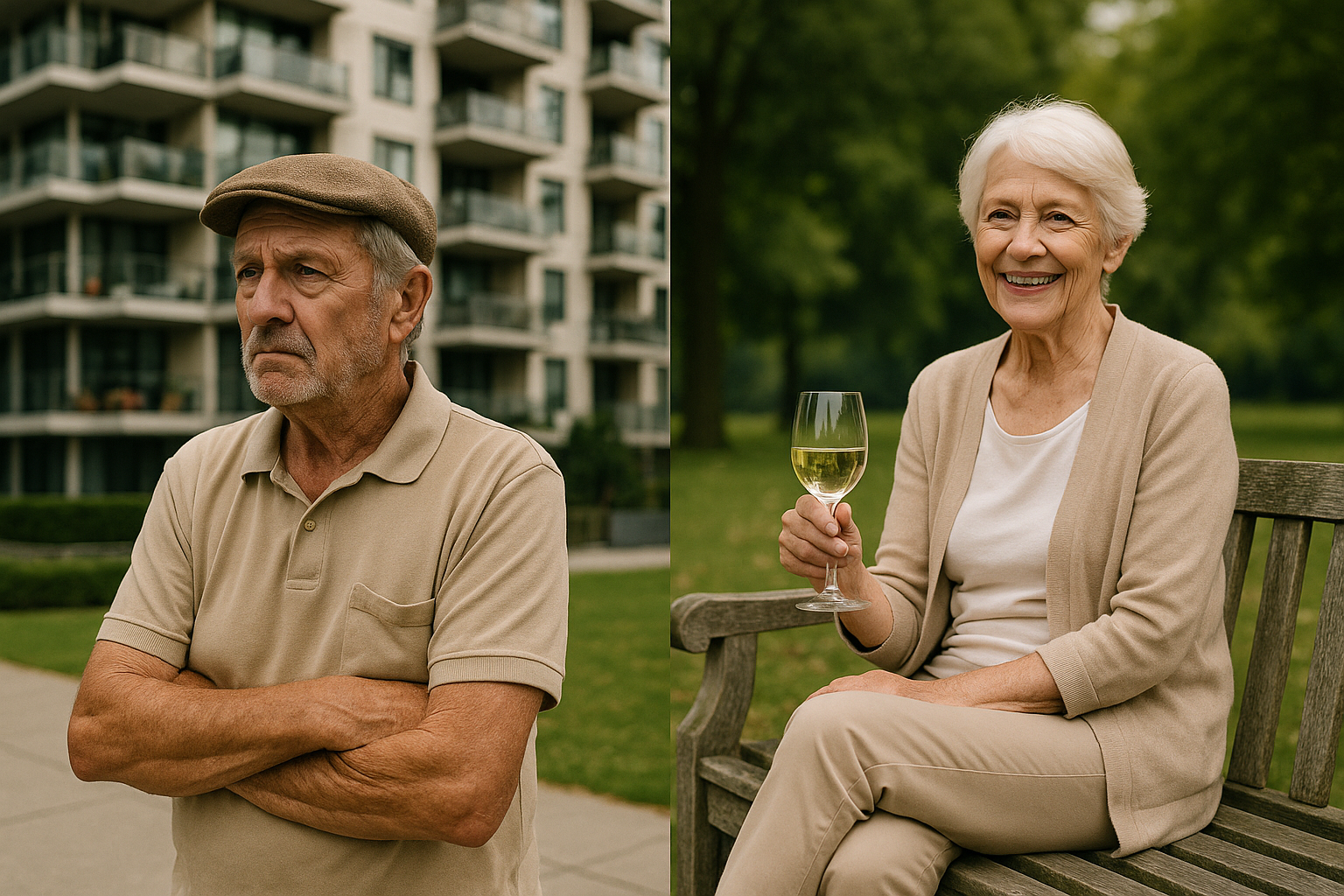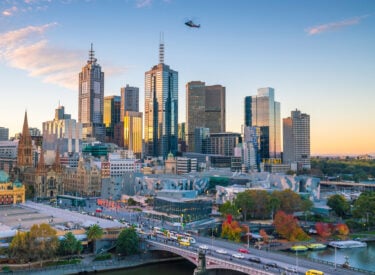
Key takeaways
The old formula — work, buy a home, pay it off, retire comfortably — no longer holds.
The HILDA Survey shows two in three retirees who rent are now living in poverty, and the gap between owners and renters is accelerating, not stabilising.
Millennials and Gen Z are entering mid-life with dramatically lower ownership rates than previous cohorts.
Simon's point is blunt: every new wave of retirees will contain fewer homeowners, making future poverty among older Australians a near certainty unless something shifts.
Superannuation balances aren’t keeping pace with rental inflation.
Retirees relying on the pension and super face rising housing costs, fixed income, and no security of tenure — a structurally unworkable combination in a tight rental market.
Structural forces — migration patterns, intergenerational wealth gaps, government policy failure, and rising longevity — are widening the divide.
The only reliable defence for individuals is early, strategic property ownership
For decades, Australia has taken pride in offering one of the world’s most liveable lifestyles: safe cities, high wages, generous social systems and, of course, the long-held expectation that you’d eventually retire in the comfort of your own home.
It was the classic Australian promise: Work hard for 40 years, pay off the mortgage, and enjoy a modest but secure retirement.
But the latest data from the long-running HILDA Survey has shattered that illusion.
Today, two in three Australians who rent in retirement are living in poverty.
And the wealth chasm between retirees who own a home and those who don’t is widening at a pace that should alarm anyone under 55, because unless something changes, this divide will only intensify.
This is no longer just a story about older Australians.
It’s a story about Australia’s future, and whether younger generations will inherit stability or struggle.
As demographer Simon Kuestenmacher said in our latest discussion in our Demographics Decoded podcast:
“In retirement, please do not rely on just your superannuation nest egg. That’s probably not enough. The best protection to avoid poverty in old age is to own the property you live in.”
He’s right.
And the data proves it.
For weekly insights, subscribe to the Demographics Decoded podcast, where we will continue to explore these trends and their implications in greater detail.
Subscribe now on your favourite Podcast player:
Why this issue matters: a perfect storm is building
Australia’s retirement system, a combination of superannuation, personal savings and the age pension, was designed in the early 1990s for a very different economic environment.
Back then:
- House prices were roughly 3x annual income, not 7–12x
- Rents were lower and more stable
- Interest rates were high but homes were cheaper
- Job security was far stronger
- Life expectancy was shorter
- Population aging was slower
In that era, even modest earners could buy a home, pay it off before 65 and rely on super and the pension for the rest.
But that entire model is now breaking down.
And it’s breaking down on multiple fronts at once:
1. Homeownership rates among younger Australians are falling
Millennials and Gen Z are entering their 30s and 40s with significantly lower ownership rates than Baby Boomers and Gen X did at the same age.
Simon's warning is clear:
“Each cohort entering retirement has a lower homeownership rate. That means fewer retirees owning homes in the future. This number is going to grow, it’s all but guaranteed.”
2. Rents are rising faster than incomes
In many capital cities, rents have risen 20–40% in just a few years, while wage growth lags behind.
3. Superannuation balances can’t keep pace with rental inflation
A comfortable retirement today requires around $70,000+ per year for a couple, according to ASFA, but superannuation balances for many retirees fall far short of that.
4. Migration is reshaping the wealth landscape
Many first-generation migrants lack intergenerational property wealth, widening the retirement gap.
5. People are living longer
A 65-year-old today is likely to live another 20–25+ years. That’s a long time to be renting on a fixed income.
HILDA Survey: the truth behind the numbers
The HILDA Survey (Household, Income and Labour Dynamics in Australia) tracks Australians over decades, following the same people to capture real long-term change.
It reveals:
- 12% of retirees now rent, double the rate from two decades ago
- Renters have dramatically lower super balances
- Renters spend up to 40–50% of their income on housing
- Pension payments don’t keep up with real rent growth
- Immigrants and low-income earners are disproportionately affected
Simon added:
“Once you rely only on super and pension income, your rental cost doesn’t fall, but your income does. That’s when trouble hits.”
This is the crux of the problem. Retirement costs don’t shrink; income does.
Why renting in retirement is so financially dangerous
The difference between retiring as an owner versus a renter is enormous.
If you own outright:
- Housing costs collapse to around 1% of property value per year (maintenance, rates, insurance)
- You have predictable expenses
- You enjoy security of tenure
- Your asset is a hedge against inflation
- You likely have a greater super balance and savings
If you rent:
- Your biggest cost, rent, never ends
- Rent rises over time while income stays fixed
- Housing stress persists for life
- You’re vulnerable to eviction or rent hikes
- Government assistance rarely covers rising costs
Australia’s rental market is not built for retirees. It’s built for young, mobile households.
Yet more retirees are entering it each year.
This is why so many older renters now fall below the poverty line.

The intergenerational wealth divide: a new structural challenge
One of the quiet drivers of this retirement divide is something many Australians underestimate:
Intergenerational wealth transfer, the Bank of Mum and Dad.
Homeownership is easier when:
- parents contribute to the deposit
- parents guarantee part of the loan
- parents gift early inheritances
But not all families can do this.
Simon broke down the numbers brilliantly:
“A mortgage is a poverty penalty. Borrow $500k over 30 years at about 5.3%, and you’ll repay a million dollars. So if parents give $100k, they effectively save their kids $200k or more in repayments.”
That’s the power of early help.
But migrants, lower-income households, and families without historic property ownership miss out on this shortcut.
This creates a growing divide between Australians who inherit housing wealth and those who don’t.
The Government’s response: helpful or harmful?
Recent government schemes, such as allowing first home buyers to purchase with a 5% deposit on homes up to $1.5 million in Sydney or $950,000 in Melbourne, sound helpful.
But they solve only one thing: demand.
They do nothing for supply.
And without supply, prices inevitably rise.
Simon put it succinctly:
“You buy goodwill today, but worsen affordability tomorrow. It’s kicking the can down the road.”
The government also guarantees more mortgages, meaning:
- banks take less risk
- taxpayers take more risk
- The government becomes even more invested in preventing house price declines
This creates moral hazard.
And it virtually guarantees that housing will not become meaningfully cheaper.
Meanwhile:
- Social housing stock has fallen to under 4% (should be 10–12%)
- Rent assistance fails to track real rent increases
- Building approvals remain at decade lows
- The construction sector is still struggling with labour shortages
In other words, policy is not catching up.
So what needs to change?
Simon outlined three key reforms, all of which are sensible, but expensive:
1. Index rent assistance to real rental prices
If rents rise 8%, rent assistance should rise 8%. Currently, it doesn’t.
2. Rebuild social and affordable housing
To lift stock from <4% to 10% would require a long-term pipeline of tens of thousands of dwellings annually.
3. Trial innovative ownership models
Shared equity, long-term lease communities, or a new city built on land-lease only.
Simon even suggested:
“Let’s take a small sliver of Tasmania or South Australia and trial a new city where nobody owns the land, only the asset. See what happens.”
It’s bold, but Australia needs boldness.
So what can individuals do?
Government reform will be slow. Demographics will not wait.
So Australians must take their own future seriously, long before retirement arrives.
Here’s what works:
1. Prioritise homeownership early
Even if you rentvest initially, having a plan to eventually own your home outright is critical.
2. Consider strategic property investment
Property remains the most reliable long-term wealth creator, but only when purchased with strategy, not emotion.
This is why at Metropole, we focus on:
planning → ownership structures → asset selection → long-term growth → wealth protection → intergenerational transfer.
3. Use the Bank of Mum and Dad wisely
Early assistance (even small amounts) has an outsized impact because it reduces compound interest paid to the bank.
4. Don’t rely solely on super
Super is a powerful tax-effective investment vehicle, but it cannot offset lifelong rental inflation.
5. Plan your financial future decades ahead
Retirement planning needs to start in your 30s and 40s. Not at 55.
A final reflection: the gap isn’t closing, it’s accelerating
If nothing changes, Australia will see a structural shift:
- Wealthier Australians will retire comfortably as homeowners.
- Poorer Australians, disproportionately renters, will face lifelong housing stress.
- Migrants without intergenerational wealth will struggle the most.
- Millennials and Gen Z risk becoming the first generations to retire worse off than their parents.
But…
This outcome is not inevitable for individuals willing to plan strategically.
As Simon reminded us:
“Owning your home in retirement means your monthly costs collapse. That’s too valuable to replace with super alone.”
He’s absolutely right.
And the best time to prepare for a secure retirement is long before you get there.
If you found this discussion helpful, don't forget to subscribe to our podcast and share it with others who might benefit.
Subscribe now on your favourite Podcast player:














